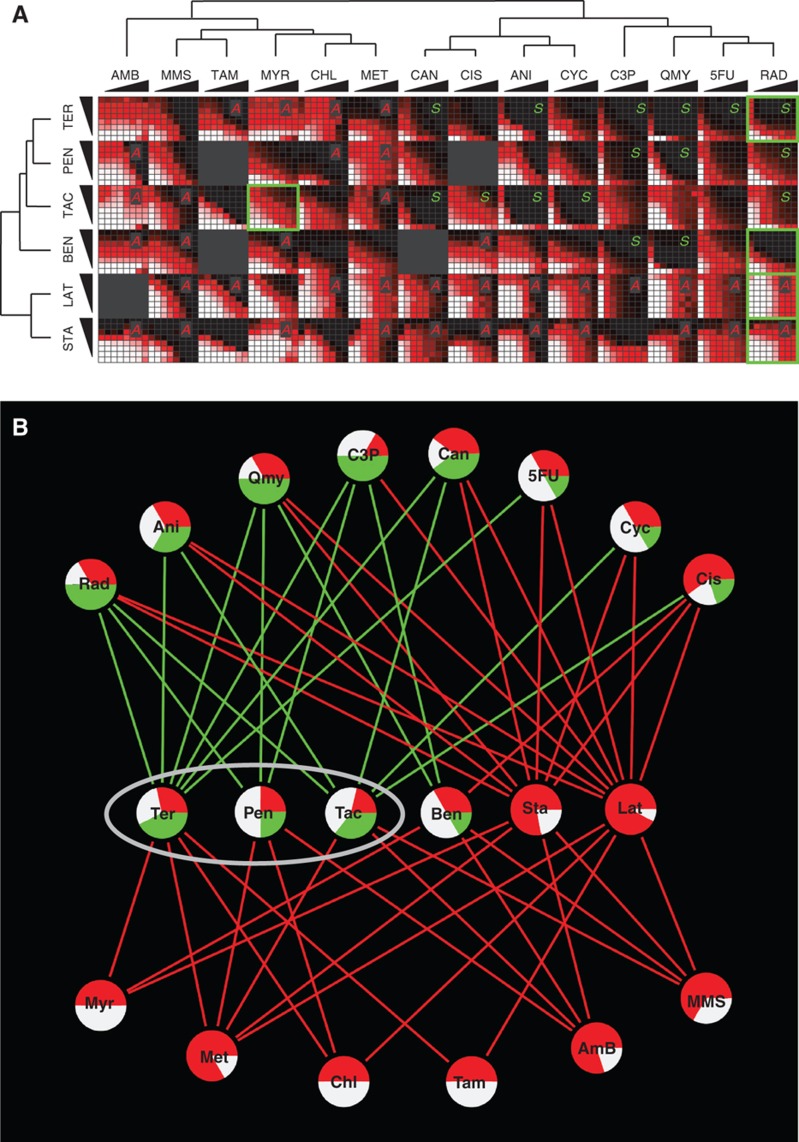Figure 4.
Synergy tests between 6 drugs (3 predicted to be promiscuous synergizers and 3 predicted to be chaste synergizers) and 14 arbitrarily chosen drugs. (A) Drug pairs were combined in 8 × 8 matrices where the concentration of one drug was linearly increased along each axis. Promiscuous synergizers (top three rows) showed 14 synergies (S) while chaste synergizers (bottom three rows) showed 2 synergies. Thirty-seven significant drug antagonisms (A) were observed, predominantly involving chaste synergizers. Green squares correspond to drug pairs that target proteins encoded by synergistic genes. Hierarchical clusterings of drug interaction score profiles are shown on the left and top. (B) Network representation of the synergy and antagonism drug interactions shown in (A). Edges reflect the interaction type between two drugs and the node pie charts represent the ratio of different types of interactions each drug has in this data set (green: synergy, white: independent; red: antagonism; independence edges are omitted for clarity). Gray circle indicates the promiscuous synergizers learned from the drug interaction network in Figure 3B. For drug name abbreviations, see Table I.

